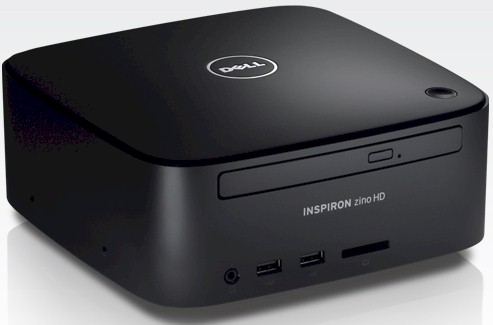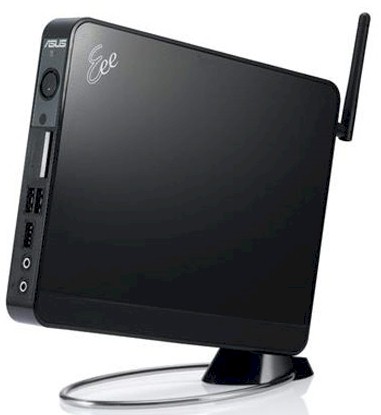Judging from the emails I’ve received and comments posted in the Forums, it looks like I’m not alone in my desire to cast off my DirecTV oppressor. Thanks to everyone who wrote in or posted about Part 1 and rest assured that I’ve read everything you sent, even if you didn’t receive a direct reply.
Bloomberg BusinessWeek’s Revenge of the Cable Guys article made interesting reading over the weekend. The piece describes how the CEO’s of Time Warner and Comcast conceived of the TV Everywhere service, which was announced last June. Since then, the duo has been trying to rally cable operators to make it an industry standard. And they’ve succeeded enough to cause the nonprofit, Free Press, to issue a report detailing alleged collusion among cable providers and send a letter to the DOJ, requesting an antitrust investigation of TV Everywhere.
In a nutshell, TV Everywhere will provide access Internet access to everything you now get from your cable provider (plus usually other content designed to sweeten the deal). The catch is that you can only get the service if you already are a cable subscriber. Such a deal!
Among the feedback received, a few writers said they are using Windows Media Center for their online TV watching, which was surprising. I last played with WMC a few years ago at CES when Microsoft was making its Vista push. The version of WMC that was integrated into Vista had a much more appealing user interface for sure. But the online content that I found wasn’t very compelling, so I just moved on.
But it looks like Microsoft has beefed up the online offerings with programming from CBS, MSNBC, PBS, Showtime and others. And with the HomeGroup and UPnP capabilities in Windows 7 that make it easy to share and stream content, I’ll be adding it to the list of alternatives to check out.
Boxee Blues
Since the last post, I’ve mainly been checking out Boxee. I’ve been relatively excited about Boxee and even nominated the first commercial appliance version—the Boxee Box by D-Link—for the Last Gadget Standing contest at this year’s CES, where it won. But that nominatation was primarily based on Jim Buzbee’s positive review of the alpha release back in early ’09 and not any personal hands-on with the product. Not that I could have had hands-on anyway, since the Box itself just about made it to CES, where it generated a lot of buzz.
The Boxee Box by is supposed to be out by the end of June, if they make their announced ship date. But judging by D-Link’s past record of products announced at CES and my own experience with the Boxee Beta, however, I’d say that a June ship will be a biig stretch. So rather than wait for the retail product, I just downloaded the Boxee Beta (0.9.20.10711) and had at it.
I’ll go into more detail on my experience with Boxee next time. But my time spent with the product so far has me wondering about my choice of the Acer Asipire Revo 1600 as my Internet TV exploration vehicle.
If you do some search homework on the 1600 and Boxee, you’ll find enough contradictory information to make your head spin. Some folks say it’s just fine and they have no problem playing anything. While others report jerky, laggy video with frequent halts when they try to play anything from Hulu.
There are many reasons given for playback problems in Boxee. Some blame Windows XP‘s alleged lack of support for hardware acceleration. Others swear by increasing the amount of RAM allocated to video buffering, while others say that it doesn’t matter and just steals RAM from the OS. There’s also a lot of discussion about Flash Beta versions, comparisons to Hulu Desktop and reports that playback from browsers is better than through Boxee. As I said, enough to make your head spin.
Boxee forum regular judgeschambers seems to feel that the Revo 1600’s use of a single core Atom is the culprit, especially for playing Flash-based content. He has a Revo 3610 and reports no problems playing even 1080p H.264 files. But others report problems with their 3610’s, so he has posted the details of his configuration in an attempt to help out.
My own experience with the Revo 1600 in its factory configuration (XP SP3, 1 GB RAM) is that most TV content that I tried through Boxee Beta was jerky and laggy with out-of-sync audio. I tried updating the video drivers to GeForce/ION Driver Release 196, increasing video buffer memory (after adding 2 GB of RAM), loading Flash Beta 10.1 plug in and ActiveX and updating DirectX rutime. But none of those tweaks helped.
In re-reading Boxee forum posts where Revo 1600 users report success, I see that they usually install Win 7 and throw in more RAM. But by the time you do that, you’re just about up to the $330 cost of a Revo 3610, which has an Atom 330 dual-core CPU, 2 GB of RAM and Windows 7 Home Premium (64-bit) and throws in a wireless keyboard and mouse vs. the cheapie USB ones included with the Revo 1600.
One more final vote for dual core comes from D-Link, which has based its Boxee Box on a NVIDIA Tegra 2 (T20) platform, which features a dual-core ARM Cortex A9 CPU and NVIDIA GPU. So it would appear that I jumped too quickly in ordering the Revo 1600, caught up in getting what appeared to be such a great deal.
But, as one SNB Forums poster put it "who cares if the device (Mac Mini, Acer Aspire, etc.) costs $150 or $600? Or even a couple hundred more? I currently pay $135 a month for cable. Even if I put together a system that costs $1000, I’ll recoup the full cost in less than 8 months!". He makes an excellent point.
Moving Off the Revo 1600
However, before I put a Revo 3610 on order, are there any other viable options for around the same price point? Well, there’s Dell’s Zino HD, which is a bit larger than the Revo, but still pretty compact and includes a DVD writer drive.

But with all the configuration choices, I’m going to need to do some more homework before pulling the trigger on it. And some of those choices push the cost up to around $500. I’ll need to dig into the Avsforum Zino HD thread and this AMD guy’s posts [here and here].
There’s also the ASUS Eee Box EB1012-B0257. It’s configured similarly to the Acer Revo 3610, with a 1.6GHz Intel N330 Atom Dual Core Processor, NVidia ION graphics, 2 GB of RAM and Win 7 Home Premium, but sells for around $50 more.

So I have more work to do before I buy a replacement for the Revo 1600. In the meantime, I still have my Aspire 1810T netbook to fall back on. Its combination of dual-core Pentium SU7300 CPU, 4 GB of RAM and 64 bit Win 7 Home Premium should have enough compute oomph to keep me going for awhile.
Next time, I’ll report on my disappointing experience with Boxee Beta. And I don’t mean just the problems caused by too-slow hardware!
